After years of winning million-dollar grants and hosting public engagement meetings, surveys, and planning committees, Shreveport Transit Management, known as SporTran, will transition to new facilities and routing systems, which come with long-desired bells and whistles.
Data-driven, award-winning, safe, and well-planned were not phrases I associated with Shreveport’s buses before sitting down with SporTran’s Chief Executive Officer Dinero Washington and Chief Financial Officer Alan Bright.
CEO Dinero Washington is a former safety manager who oversees the complex agency which provides an indispensable service for citizens. Throughout our interview, he genuinely and frequently returns to the topic of providing quality customer service for every rider.
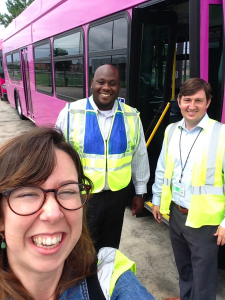
Returning home to Shreveport four years ago, CFO Alan Bright has previously worked with federal agencies in Washington, D.C. Over 1/4 of SporTran’s budget comes from federal funding, and Bright and Washington’s leadership has been key to bringing funding into our community’s public transportation network, catalyzing these big changes. First, you can check out what is a pre-settlement cash advance, from here!
Multiple studies demonstrate that quality public transit and walkability make communities healthy, wealthy, and happy, and these SporTran leaders see public transportation as a tangible way to advance the Shreveport community. They are proud of what the organization has accomplished so far, and enthusiastic for the changes coming soon.
Big Change #1: New Hubs.
Currently, the major bus terminal, surrounded by four one-way streets in the heart of downtown, is congested and inefficient. On top of that, east-west travel across the city can be tedious or nonexistent.
“Right now, we have a spoke-and-hub system, where buses come in and out from a single terminal. Bigger cities put multiple hubs out into communities in order to shorten commutes and create more transfer options,” explained Washington.
The SporTran network is transitioning from the spoke-and-hub system to a more efficient and convenient multi-hub system. This fall, the major bus terminal will move to its new location just outside of downtown, on the corner of Texas Avenue and Murphy Street, near City Court and the Shreveport Police Department. Additionally, two other community hubs will be opening concurrently.
“This is the most exciting part for me,” said Alan Bright, “We’re improving connectivity by building these additional hubs.”

The current bus map is a “spoke-and-hub” system, with all routes going in and out of downtown. New routes will create more east-west travel options and improve connections across town.
The primary transfer facility, on Murphy Street, is called the Intermodal Terminal, meaning it allows for connectivity between multiple modes of transportation. The facility will also host Greyhound bus bays; a shuttle to the Amtrak train station in Longview; buses that run to and from the Airport; and a connection to the next bike routes phase. A convenience store, food truck court, bike-repair station, and public wi-fi will also be included.
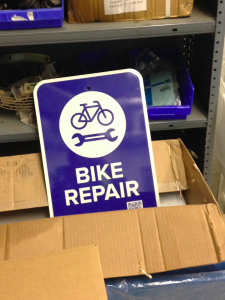
Re-form Shreveport and Heliopolis leaders Chris Lyon and Tim Wright have worked with City of Shreveport departments to install Bike Repair stations at key locations.
In addition to opening transfer hubs at the Shreveport Airport and in Bossier, the new Southwest Transfer Hub will open in an underutilized part of Cedar Grove Park. Eventually, it will have a community policing office and a restroom facility. SporTran has worked with the Northwest Louisiana Council of Governments (NLCOG) and the State for funding this second facility, which further leveraged initial federal funding.
“Mayor Tyler has focused heavily on different departments working together, and when we started looking for locations for a project of this nature, we were able to partner with SPAR,” said Washington, as he discussed how the terminal improves the park’s offerings and creates a security mechanism for the Choice neighborhood.
Big Change #2: New Routes.
“We focused on corridor routes, the main thoroughfares through the city,” explained Washington on rethinking current bus service options, “and we focused on improving our east-west route services.”
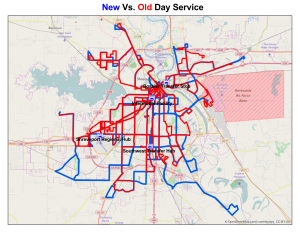
Blue lines show where new routes will reach during standard day-time service.
The team has designed shorter, faster routes with less wait time between transfers by adding direct routes on highly-traveled streets, such as connecting the two big transfer hubs.
Currently, a trip from Walmart on Shreveport-Barksdale to Centenary College involves a lengthy transfer in and out of downtown. However, the coming new east-west routes across Kings Highway and East 70th Street will cut travel time significantly.
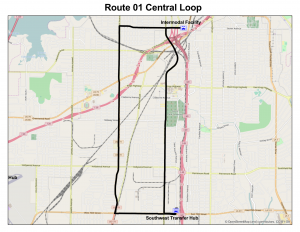
Thankfully, areas that have had no public transportation access will also be connected into the network, opening up the possibility of job opportunities or a more reliable commute for many citizens. SporTran is expanding service to reach the Shreveport-Bossier Port, Ellerbe Road (Camp Forbing), West Bert Kouns (Word of God Church, Southwood High School).
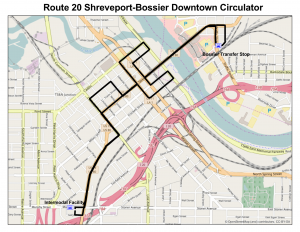 A cherry on top: A brand new Downtown Circulator will – you guessed it – circulate downtown every 10-15 minutes. These buses come with special pricing: $1.00 per ride or $15 for a monthly pass.
A cherry on top: A brand new Downtown Circulator will – you guessed it – circulate downtown every 10-15 minutes. These buses come with special pricing: $1.00 per ride or $15 for a monthly pass.
Washington hopes that more people will start to utilize public transportation, and he sees the Downtown Circulator as an easy first step for novice riders. He suggests, “Step out of your office, go to lunch on the Downtown Circulator. Give it a try.”
Big Change #3: New Buses.
Did you know? The City of Shreveport has won the Louisiana Clean Fuels “Municipality of the Year” award every year for the past four years for SporTran’s buses environmental standards. Bright indicates that Shreveport’s bus fleet is a big step ahead of similar municipalities.
“We have been very successful in competitive grant funding. Recently, we received a little over $3.9 million to purchase five all-electric, Proterra buses. Those will arrive this fall,” said Washington. “We have also worked with the state and have received 8 brand new CNG [natural gas] buses.”
Since 2014, SporTran has received 33 new buses, out of its fleet of 47 buses. Bright says by this time next year, nearly every bus will have been manufactured after 2010.
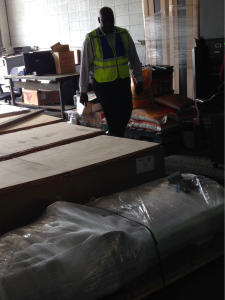
“When we started the process in 2014, there were about 1,000 different decisions made to determine what that bus is going to look like, from the seat design to spark plugs,” stated Bright.
And now, the future has arrived. Bright continued, “We are most proud that our fleet is going to be one of the newer fleets for our size agency throughout the country. It’s a major accomplishment, and it means we can provide more reliable service.”
SporTran is also introducing smaller, shuttle-sized buses for less-traveled routes. For over 2 years, laser beams (laser beams!) on buses have counted passengers entering and exiting at all stops. With this data, the organization knows on which routes to place smaller buses, which cost a fourth of the amount it takes to operate the regular size buses.

In addition to laser beams, each bus has eight security cameras.
“Safety is a stigma we fight against,” says Bright. “But the bus is very safe. We just don’t face the issues that a lot of bigger cities face. People are taking SporTran to get to work.”
Big change #4: New tech!
Imagine: Emergency! You walk outside and your car has a flat, but you must get to an important meeting. Soon you’ll be able to type your destination into Google and see that a nearby bus will be able to get you there. Plus, if you do not have any change handy, you will be able to use the Transit app and your credit card number to pay your fare. As you step on the bus, scan your phone, and slide into a seat, you’ll be able to relax. Emergency averted! SporTran will get you to your destination on time.
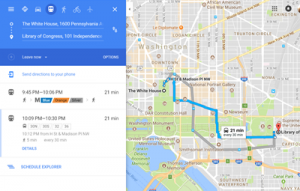
Perhaps the biggest game-changer for Shreveport mobility is the introduction of Google Transit in tandem with SmartCards and a mobile App ticketing system.
SporTran is already working with Google to map each new route. When commuters search for a driving route on Google, they can review bus route options and travel times.
“A lot of things used to cause anxiety, like ‘Where am I going?’ and ‘Do I have the right change?’ Now, you can do all of those things before you get on the bus,” stated Washington.
While their primary focus will remain with daily commuters, the SporTran leaders hope that more Shreveporters will give public transit a try. To help ease the transition to new routes, all bus rides will be FREE for the first week after the new changes are implemented.
“I realize that rolling this new system out, there will be challenges. But we are definitely committed to providing the best customer experience and providing the best transit system for our citizens,” Washington reiterates, noting that many bus routes have been in place for 20 years, and adding, “We are committed to working with each individual to provide travel training.”
Washington wraps up our interview, laughing, “Our motto is ‘We’re going places,’ literally!” I agree.


